|
Genres, Themes, Actors, and Directors:
- Elsa Lanchester Films
- Jack Lemmon Films
- Janice Rule Films
- Jimmy Stewart Films
- Kim Novak Films
- Play Adaptations
- Romantic Comedy
- Witches and Wizards
Response to Peary’s Review:
Peary writes that people who “saw this mild comedy” — an “adaptation of John van Druten’s play” — when it was released in theaters may “have a soft spot for it”, but warns that “otherwise you’ll be disappointed, even bored”. He notes that while a “dream comedy cast was assembled”, “everyone seems to have taken tranquilizers”, and argues that the “picture cries out for wildness, even slapstick humor”, thanks to “lifeless direction by Richard Quine”. I’m in full agreement with Peary’s assessment of this disappointing “follow-up” to Novak and Stewart’s romantic pairing the same year in Vertigo. Novak, while appropriately sexy and seductive, seems decidedly bored throughout much of the film:
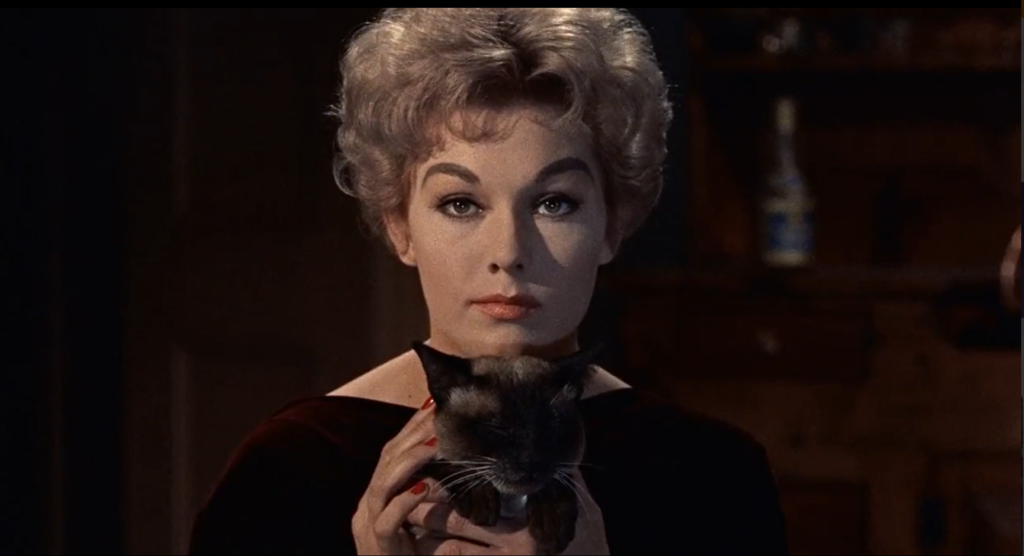
while Stewart brings nothing new to his rather thankless role as a spellbound chump.
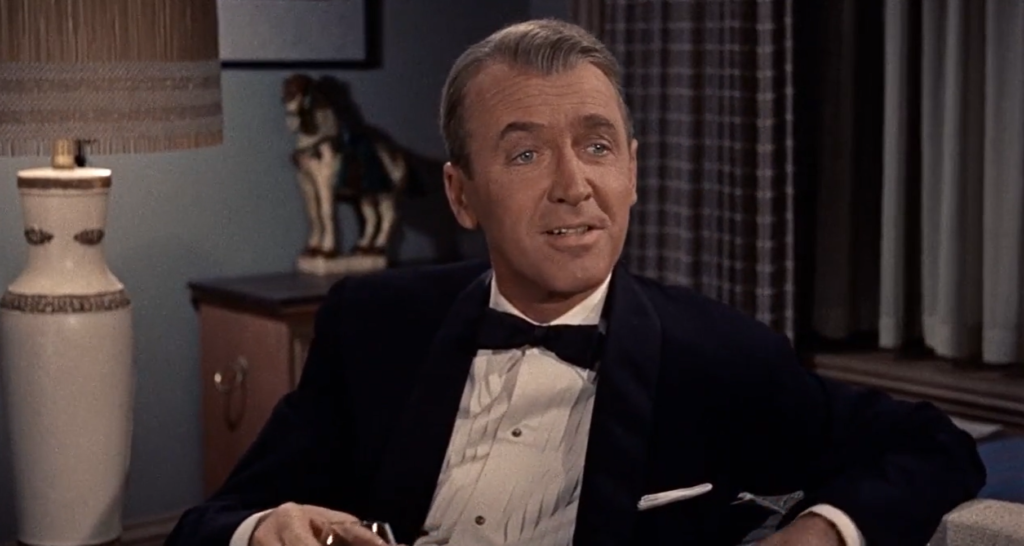
Meanwhile, Lanchester is typecast in a throwaway role as Novak’s ditzy aunt:
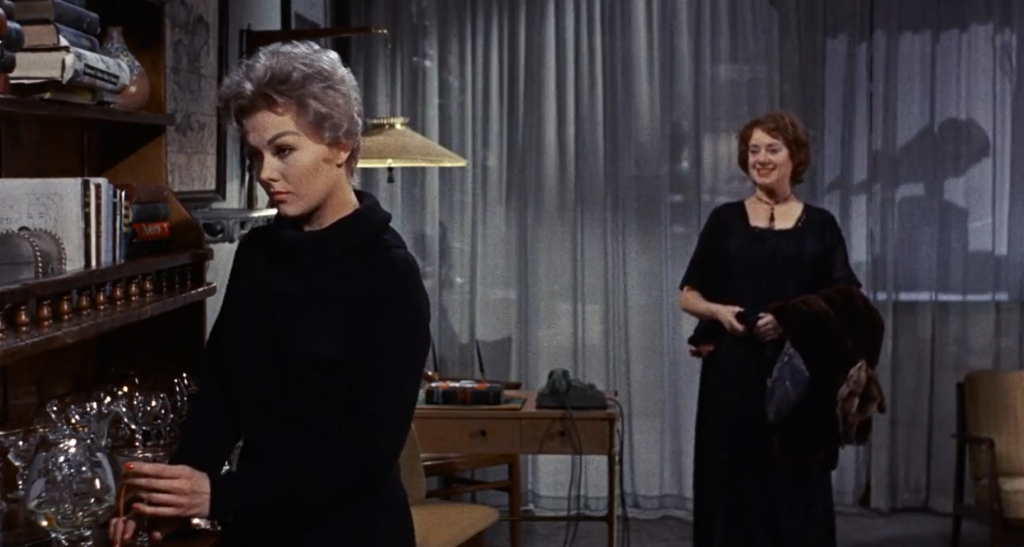
and Lemmon is merely serviceable as Novak’s foolhardly brother.
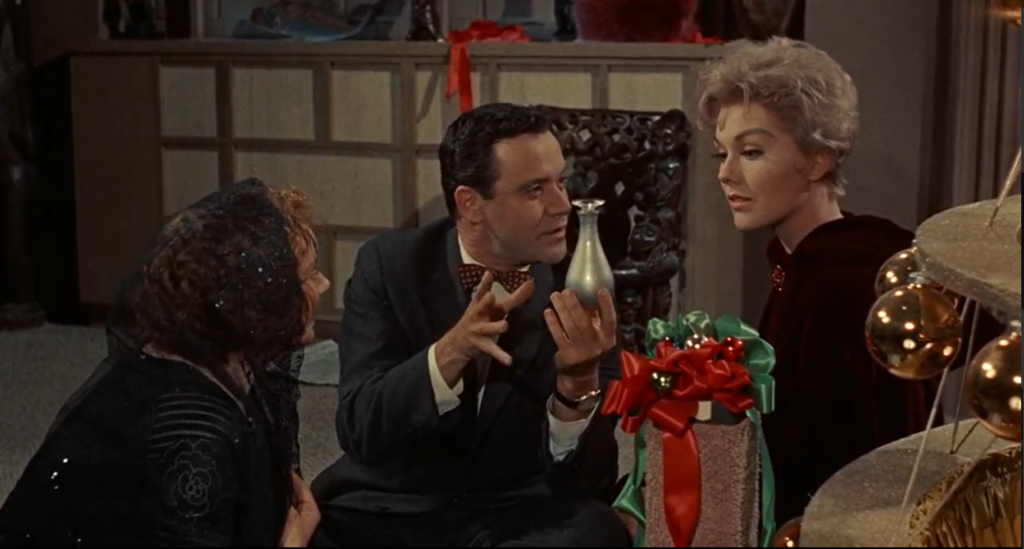
Smidgens of relief come from both Janice Rule as Stewart’s smug fiancee, and Ernie Kovacs as the perennially befuddled “occult” author, but they ultimately can’t save the predictable storyline from itself.
Redeeming Qualities and Moments:
- Janice Rule as Merle Kittridge
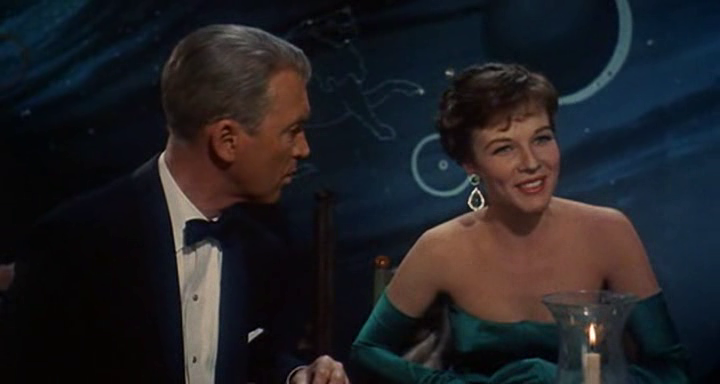
- Ernie Kovacs as Sidney Redlitch

Must See?
No; this one isn’t must-see viewing.
Links:
|
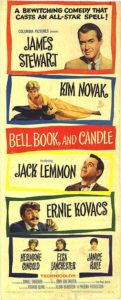






3 thoughts on “Bell Book and Candle (1958)”
A once-must, for its cult appeal.
I take a different approach to this piece. Even though it’s not a favorite of mine, I think all involved are engaged in and committed to the project. It may not be wildly hilarious but it doesn’t need to be – it’s a love story.
It was also originally written by a gay man – John Van Druten. So, considering the time it was written in, it’s not difficult to see through the masquerade. Note some of Novak’s lines: “Auntie…Auntie, don’t you ever wish that you weren’t what we are?”; “Don’t you know it doesn’t pay to tell outsiders?”; “That’s what happens to people like us – we forfeit everything and we end up in a little world of separateness from everyone.”
Well, at the time, it couldn’t be spoken about in straightforward terms, could it? And writers do have to make a living.
‘BB&C’ would obviously be the inspiration for the hit tv series ‘Bewitched’. But, more importantly – it clearly inspired Ira Levin when it came time for him to write ‘Rosemary’s Baby’. The witches in ‘BB&C’ seem to have a tentative hold on satanic powers; Levin would take that to a deeper level.
It’s also interesting to see ‘BB&C’ as the counter-balance to ‘Vertigo’; in that film, Stewart has the upper hand. But here the power more or less shifts to the lady.
Though the four leads are perfectly fine (with Novak particularly alluring) there is marvelous support by Kovacs (in particular) and Hermione Gingold as an elder witch.
Personally, I would like it if there were more biting exchanges like the following –
Stewart: Yes, that girl you know – Gillian Holroyd – she’s one.
Rule: A witch?
Stewart: Yes!
Rule: Shep, you just never learned to spell.
– but one can only expect so much from the ’50s.
The film is beautifully shot by James Wong Howe, with spiffy/spot-on art and set decoration by Cary Odell and Louis Diage. Jean Louis’ costuming is stunning. The detailed look of this film is exquisite. Richard Quine may not be in the top-tier of Hollywood directors, but this is one of his best films.
Your take on this one is interesting; I hadn’t thought to look at the screenplay and characters in such a veiled light. However, I still can’t see myself choosing to revisit it or getting much enjoyment out of it, personally.
Is it a great film? No. But in gay cinema history, in particular, it has cult appeal. And because it’s cleverly disguised, it has cross-over appeal as an intriguing love story.
Perhaps I shouldn’t get started on the feminist angle: Gillian gives up her powers. How ’50s…when women more pointedly had to give up everything for men.
This film could be a matter of taste, as so many films are. But, watching it again, I couldn’t help but focus on what is below its beautifully designed surface.